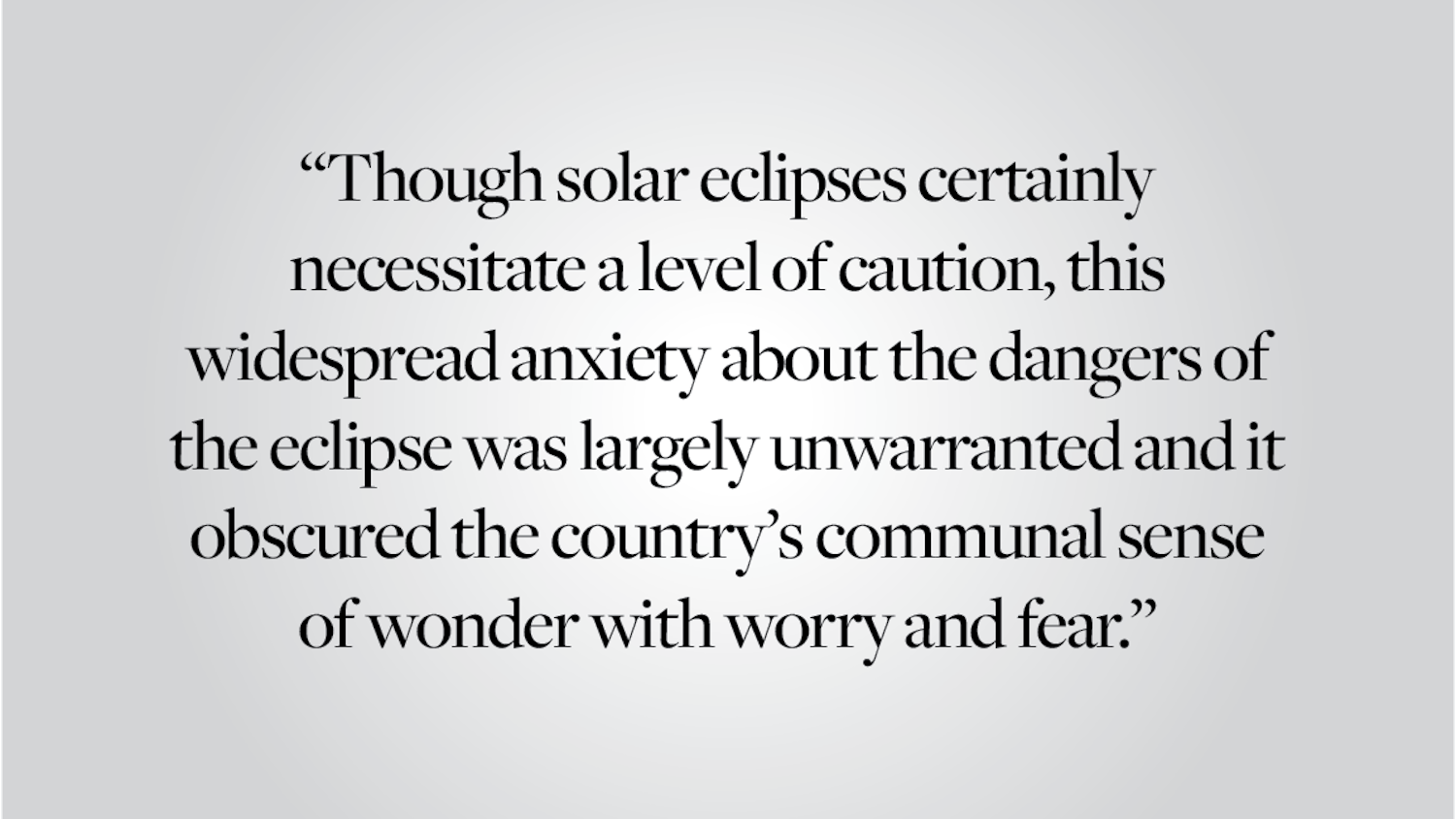A few weeks prior to my return to Providence at the beginning of this semester, I decided to revisit my old essays that I had written as part of my college application.
While scrolling through the folder, I stumbled upon one of the drafts for the “Why Brown” prompt. I remembered that I lackadaisically Googled Brown University and chose to write about the most famous aspect of the University’s undergraduate program: the open curriculum. How original.
Let me share it with you. Here is part of what I had written, verbatim:
“Brown’s open curriculum bravely and innovatively approaches the building of the curricula, helping its students minimize the risk of being confined in a stubborn, traditional academic setting. When we navigate our own ways, we choose the road that we — not others — believe to be right, possibly eliminating regret for the unwalked paths.”
Other than the fact that my senior self sounded awfully superficial, there was yet another reason to dislike the piece: I was not fully convinced by my own words.
The last sentence bothered me the most. “Eliminating regret for the unwalked paths”? What did that even mean? Does the open curriculum actually achieve that?
Is the open curriculum truly beneficial, or is it only flashy, doing more harm than good?
My mind began to change, especially during my first few weeks back at Brown, when I met a first-year who was so fiercely engaged in computer science that he would not consider any coursework outside the department. He even planned to satisfy the writing requirement, which is the University’s last resort to prevent students from doing exactly what he was doing, with a computer science course that had the WRIT designation.
I cannot think of anyone who would, with confidence, say that an 18-year-old who has been in college for no more than a year is insightful enough to set up his entire future wisely and resolutely. Even if he did possess this knowledge, a course or two in different fields would surely contribute to some well-roundedness.
This freedom allows students to make decisions for the wrong reasons. Money is a determining factor for many college students trying to decide their career paths. Students who are fearful of the uncertain futures that non-STEM fields bring may restrict themselves to concentrations that often lead to well-paying careers.
This is evident in the data provided by Brown: Only 12 percent of the applicants for the class of 2019 intend to study arts or humanities.
Money is important, but it should not dictate the means of pursuing happiness. Perhaps the University should reflect on whether or not its education model enables students to see things more essential than money.
Though a bit cliched, there are many elements of life more important than money. Last week, for example, I spoke with my uncle who is supposedly going through his “job adolescent” period. Before explaining what he meant, he described some characteristics of “life adolescence”: labile emotions, an urge for independence and an added spice of vulnerability here and there. These are all rooted in questioning — and thereby reshaping — one’s identity.
He said characteristics of adolescence in workplaces are not very different. An engaged and fervent worker suddenly, when things start feeling comfortable and consequently more mundane, falls into a spiral of mannerism. Passion loses its heat.
This is the working man’s fait accompli. Familiarity gives birth to tiredness and boredom, and emotionally healthy minds will then often contemplate the unwalked paths, asking, “Was this the right choice?”
Regret, though sometimes inevitable, can be minimized if the University provides students with a diverse education in their early college years that will allow them to search for different options when they face career challenges.
In contrast to what I wrote to gain admission, I now sense many dangers related to the open curriculum.
Since its inception in 1969, the open curriculum, despite the stated purpose of encouraging undergraduates to “become self-reflective,” has allowed students to avoid taking certain courses and become restricted by their unfounded and distorted ideas.
It may sound ironic if Brown, a school that prides itself on its unique student-crafted education, begins mandating that underclassmen take courses in certain departments, making the education seem more traditional.
But opposition for the mere sake of opposition itself should, at all times, be avoided. We must ensure that our own futile barriers are not restricting us.
What is more important: freedom to attend lectures of taste during college years, or the flexibility to change paths when necessary? One is fairly short-term, the other much longer.
We also need to consider what it means to be a Brown student or alum. Lacking in rhetoric, logic, math or science should surely not define us. Some familiarity and experience in diverse fields should be a must.
We must make sure that students experience for themselves all the possibilities. Publilius Syrus, a Latin writer during the 1st century B.C., once wisely noted that “no one knows what he can do until he tries.”
Of course, learning is most effective when it is driven by self-motivation. But the University does its best to help students, rather than carelessly observe them. The open curriculum can be great only if it is not abused.
Our liberal academic environment is one of the factors that most distinguishes Brown from many other schools, and we should cherish that. But the University needs to ensure that its policies are actually for the students’ own good, not just for show.
Nearsightedness is one of life’s most dangerous traits — narrow perspective another. The University must reflect on whether the true fruits of college are being preserved through the open curriculum.
David Ha ’18 is doing his best to broaden his perspective. He can be reached at woosuk_ha@brown.edu.




